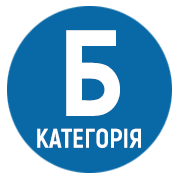THE USE OF BLENDED LEARNING MODELS IN THE PROCESS OF FOREIGN LANGUAGE LEARNING
DOI:
https://doi.org/10.25128/2415-3605.17.3.20Keywords:
blended learning, blended learning models, e-Learning, computer-mediated activities, online courseAbstract
In the article, the acute problem of implementation of pedagogical innovations and online technologies into the educational process is analyzed. The article explores the advantages of blended learning as a latter-day educational program in comparison with traditional campus learning. Blended learning is regarded worldwide as the combination of classroom face-to-face sessions with interactive learning opportunities created online. The purpose of the article is to identify blended learning transformational potential impacting students and teachers by ensuring a more personalized learning experience. The concept of blended learning, as a means to enhance foreign language teaching and learning in the classroom during the traditional face-to-face interaction between a teacher and a student, combined with computer-mediated activities, is examined. In the article, the main classification of blended learning models is established. There are four main blended learning models which include both face-to-face instruction time and online learning: Rotation Model, Flex Model, A La Carte Model, and Enriched Virtual Model. Once implemented successfully, a blended model can take advantage of both brickand- mortar and digital worlds, providing significant benefits for the educational establishments and learners. To integrate any of the blended learning models, a teacher can create online activities that enable learners to explore the topic online at home, and then develop face-to-face interactions to dig deeper into the subject matter at the lesson. The use of blended learning models in order to expand educational opportunities for students while the foreign language acquisition, by increasing the availability and flexibility of education, taking into account student individual learning needs, with some element of student control over time, place and pace, is explored. The realization of blended learning models in regards to age and physiological peculiarities of students is explained. The expected outcome of blended learning implementation is that the combination of traditional faceto- face campus activities and online technologies will motivate and encourage children to eagerly participate in the lesson and will assist in developing students’ creative, critical and logical thinking.
References
Калініна Л. В. Використання технологій змішаного навчання у процесі викладання іноземних мов у середній школі: навч.-метод. посібник / Л. В. Калініна, О. Д. Безверха, О. А. Кузьменко, Д. С. Антонюк. – Житомир: Арт Майстер, 2016. – 127 с.
Aspire’s Blended Learning 101: Handbook // General Media Literacy Lessons. – Retrieved from: http://www.blendmylearning.com/wp-content/uploads.
Bernatek B. Blended Learning in Practice: Case Studies from Leading Schools. FirstLine Schools. September 2012 / B. Bernatek, J. Cohen, J. Hanlon, M. Wilka. – Retrieved from: https://goo.gl/WLhK3r
Blended Learning // The Clayton Christensen Institute. – Retrieved from: https://goo.gl/1IpmhL
Christensen C. Disrupting Class: How Disruptive Innovation Will Change the Way the World Learns / C. Christensen, M. Horn, C. Johnson – New York: McGraw-Hill, 2008. – 272 p.
Greenberg B. Blended Learning: Personalizing Education for Students: online course / B. Greenberg, R. Schwartz, M. Horn. – Retrieved from: https://goo.gl/7ZneuO
Young J. «Hybrid» Teaching Seeks to End the Divide Between Traditional and Online Instruction / J. Young // Chronicle of Higher Education. – 2002. – No. 48(28). – pp. 13–16. – Retrieved from: http://goo.gl/yj460d






